Best indoor plants – 10 top plants to grow at home
These are the best indoor plants to bring the interior of your home alive
- (opens in new tab)
- (opens in new tab)
- (opens in new tab)
- Sign up to our newsletter Newsletter


Discover the best 10 indoor plants to add color and interest to every room with our easy-to-follow guide. Full of expert tips as to which house plants will survive best in your home, you can banish any worries of green fingered failures for good.
From statuesque favorites such as the Swiss Cheese plant and Kentia palm to the smaller but just as spectacular Calathea and Anthuriums, you can learn how to make confident house plant choices and fill your home with undemanding but super stylish plants.
With most indoor plants originating from the tropics, there’s a wide range of different plant shapes and habits to choose from too. While dainty trailing beauties such as String of Hearts and the curious Jade necklace vine will look stunning cascading from a high shelf or mantlepiece, a large glossy leaved Elephant’s Ear or Kentia palm will do a fantastic job of cozying up an empty corner. Then, of course, there are air cleaning indoor plants to consider, too.
Best indoor plants
Leading plant writer Veronica Peerless, author of How Not To Kill Your Houseplant (opens in new tab) (published by Dorling Kindersley) explains, ‘There’s a horticultural saying of ‘Right plant, Right place’ and this certainly applies to house plants as well as those in the garden. Be realistic when it comes to placing a plant indoors, consider its practical needs as well as your aesthetic ideal and be prepared to compromise.’
For instance, there are some bathroom plants that are well suited to humid atmospheres, whereas others would struggle in this environment.
Below, we tell you which house plants are the best fit for you and your home.
1. String of hearts
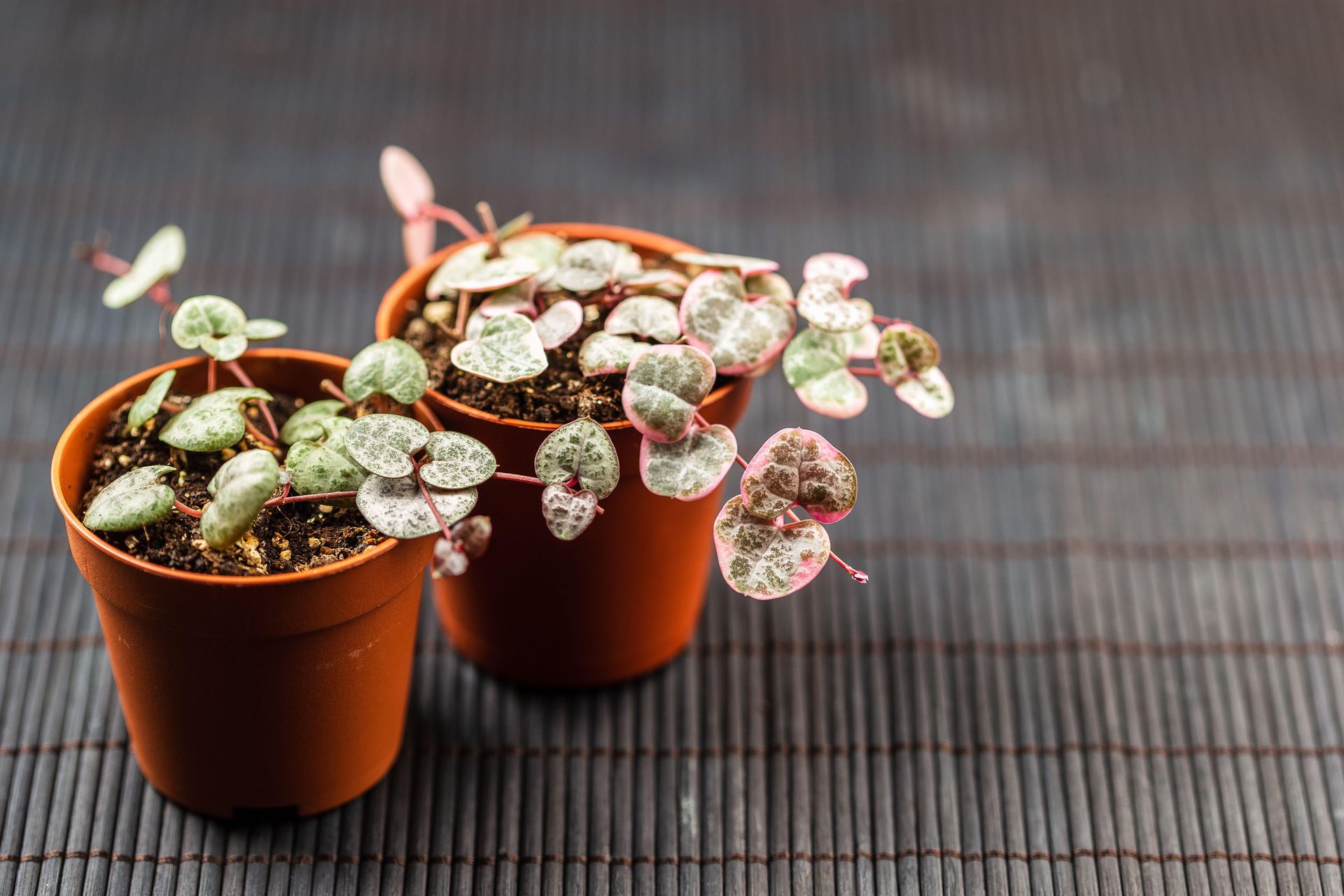
Extremely easy to look after, this delicate trailing plant is very tolerant and undemanding. Pairs of tiny heart shaped leaves are silver-grey with a rose-pink underside. Just like a succulent it stores water in its long stems, and these can reach up to six and half ft (2m) long. As a result, this plant looks stunning on a shelf or popped into a hanging planter above the stairs or window, and is lovely as a bedroom plant.
Happy at most room temperatures, just avoid draughts or direct sun, it tends to like moist but not waterlogged soil. Want to give it an occasional boost? Then mist with a water spray and pop by a window for a few hours in the morning or evening.
Add them to a dresser or shelves as kitchen plants.
2. Snake plant or Sansevieria
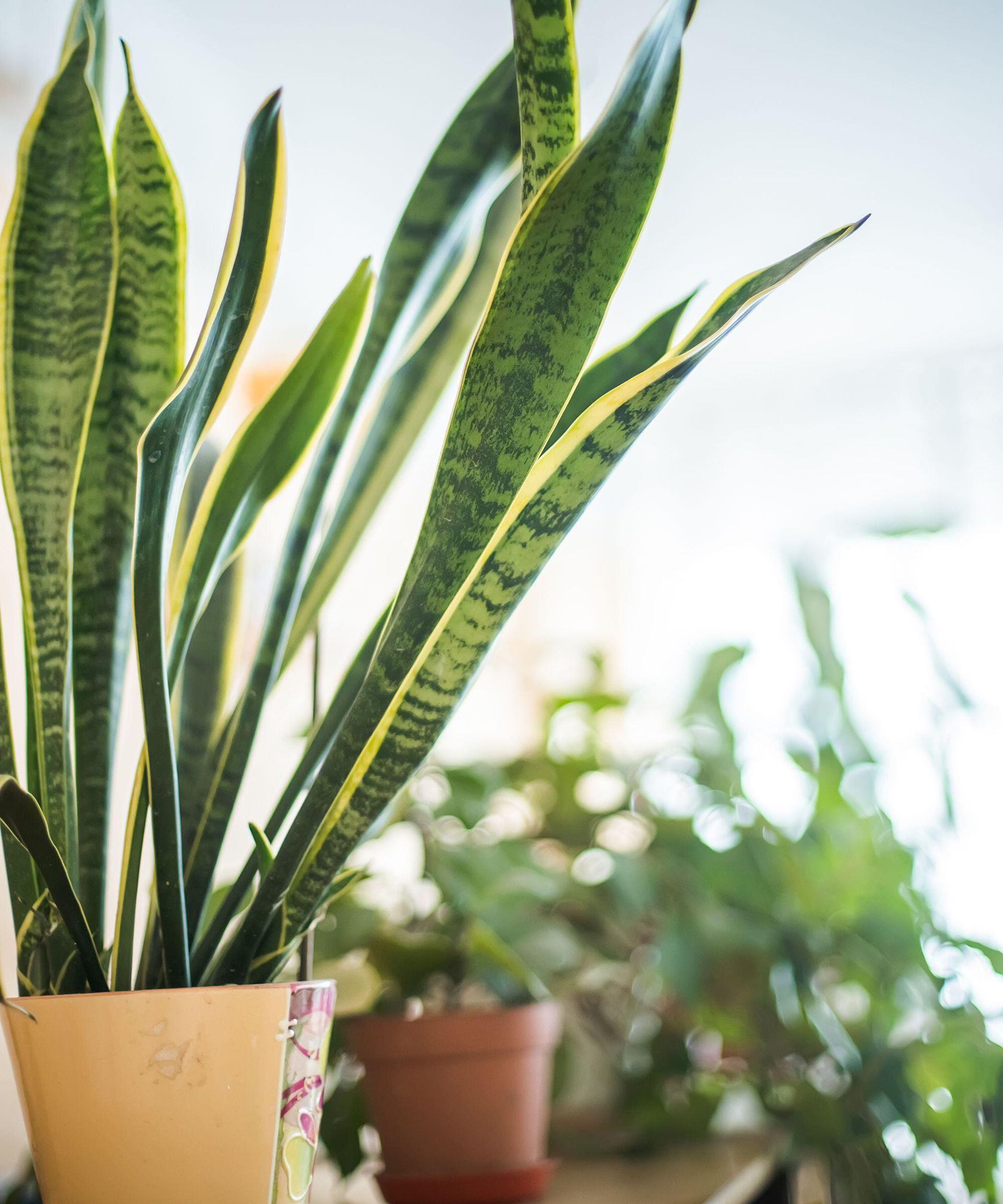
It’s the striped and twisting sword-like leaves that makes this plant so dramatic. Tough and extremely drought tolerant, it is often referred to as mother-in-law’s tongue – and makes the perfect showstopper on a side table or sitting neatly in a corner.
There are plenty of different varieties of snake plant to choose from, including dwarf varieties such as Sansevieria fischeri at 16 inches (40cm) up to 3-4ft (91-121cm) for Masoniana and trifasciata types. Relatively slow growing, they can cope with low light conditions but will grow faster in brighter conditions.
Native to west Africa these plants can stay outside in HDSA zones 9-12. They will die though if left in temperatures below 50℉ or exposed to frost. During spring and summer water once a week but do drop to once a month in fall and winter when the plant is dormant.
3. Peace lily
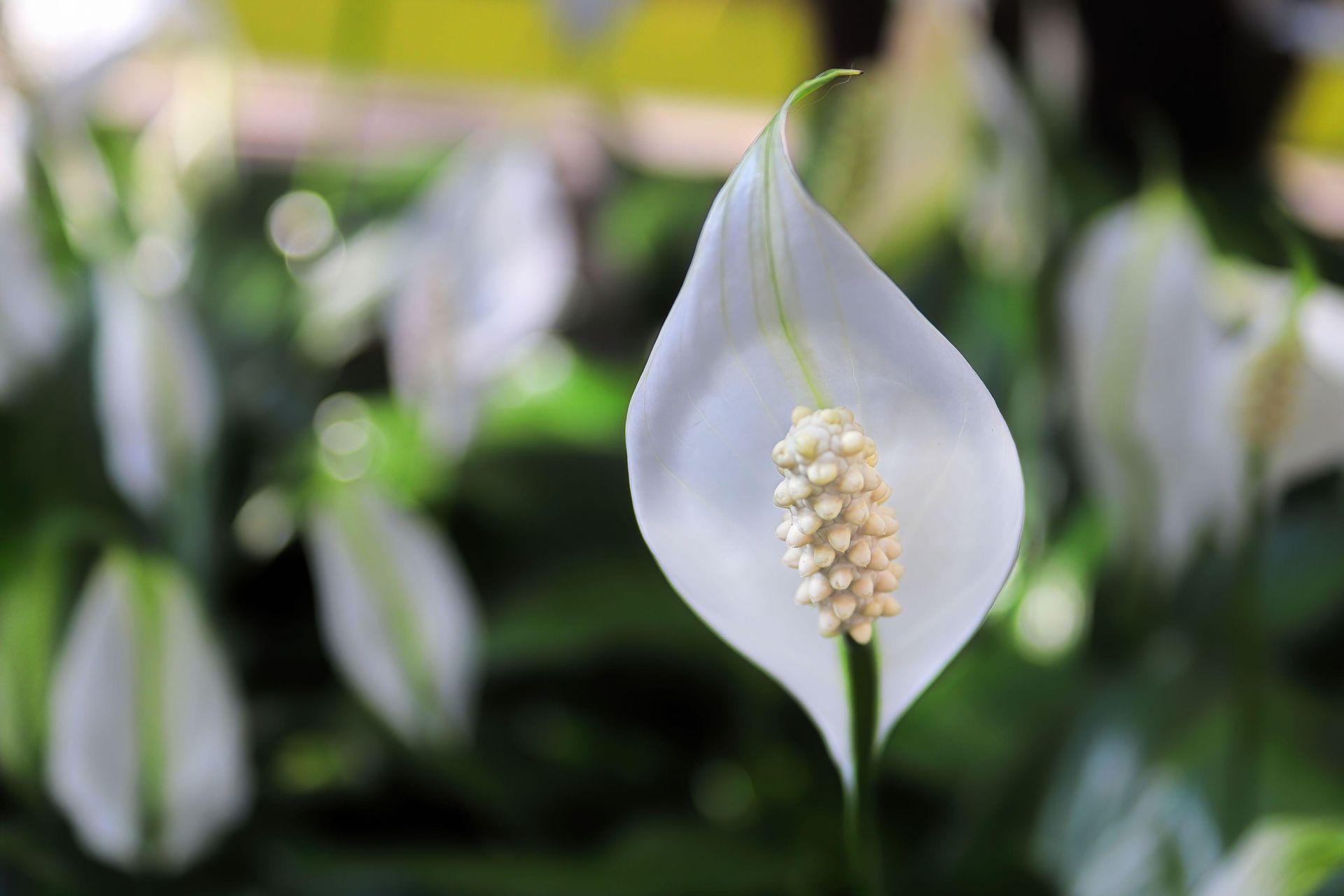
The epitome of elegance, the Peace lily with its glossy tear shaped leaves and pure white flowers is one of the most popular indoor plants. Effortlessly chic, they radiate tranquillity and simplicity but can be a little temperamental at times. They do prefer moist soil, but the good news is that these plants will tell you when they are thirsty as the leaves will droop. Pop it next to the shower for the occasional boost or mist with a water spray.
Do avoid direct sun hitting the foliage as it will scorch, but place in a light, bright spot for the healthiest deep green leaves. This plant reaches around 30 inches high (75cm) and will thrive in temperatures 64-75℉ (18-24°C) but can cope with lows of 53℉ (12°C).
4. Monstera deliciosa or Swiss Cheese Plant

Giant glossy leaves and tropical vibes – what’s not to like about Monstera deliciosa - or the Swiss Cheese Plant as it’s also known. Native to Mexico and Central America it’s an indoor plant that makes a big impact and looks fantastic.
‘Think of the climate and conditions in the rainforest, where these plants come from,’ says Mark Lawlor of Happy Houseplants (opens in new tab). ‘Humidity is high, rainfall is occasional and heavy, light is bright but usually shaded by taller trees. You can replicate these conditions in a steamy kitchen or bathroom at home, and even in a warm living room!’
These instantly recognizable plants are climbers with aerial roots, so indoors they do need to be trained up moss cover poles to mimic the trees it clings to in the wild. Indoors it can grow up to 78 inches (2m) high, but the size of pot will limit its growth. Preferring warm temperatures of between 64-80℉ (18-27°C) it can tolerate chilly conditions down to 53℉ (12°C). Do avoid cold drafts.
5. ZZ plant or Zamioculcas zamiifolia or Zanzibar Gem
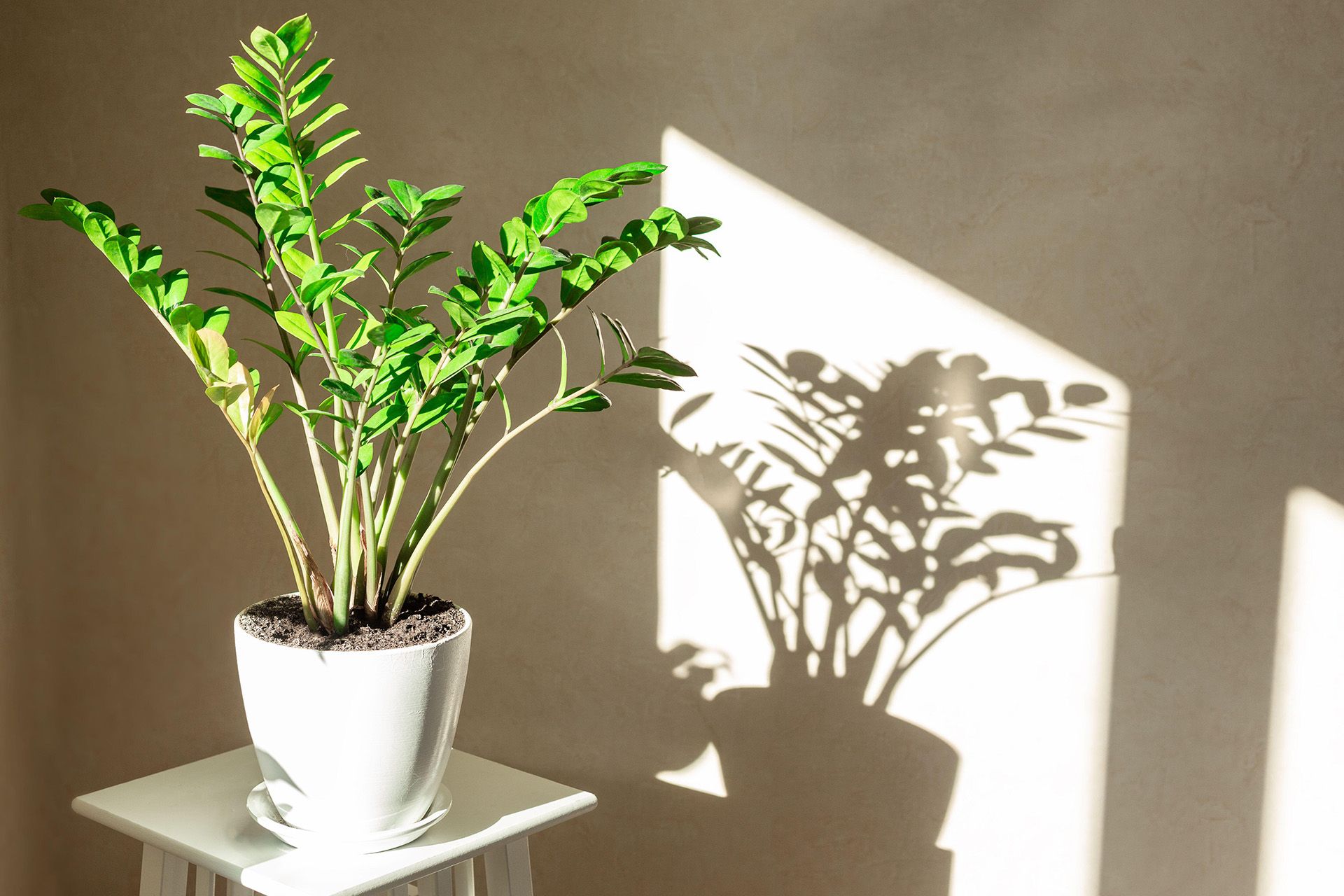
Fancy a houseplant that looks like no other? Then the ZZ plant or ric-rac plant is a must. Dark glossy slender leaves with distinct undulating edges, it makes a real impact placed on its own on a side or coffee table.
A very undemanding plant, it will merrily thrive in a shady spot as well as indirect light and is happy to be root bound, reducing the need for regular repotting. Extremely drought tolerant and hard to kill, the tall foliage slowly grows up to 3ft (just under 1m) high and prefers temperatures of 59–75℉ (15°C to 24°C).
One extra bonus is that the ZZ plant also has air purifying capabilities, removing harmful compounds such as benzene, toluene, ethylbenzene and xylene. Give it an extra growth boost by feeding it with liquid fertilizer once per month in spring and summer.
6. Philodendron

If you are after a tall, upright plant that won’t invade your space then try a philodendron. A large leaved climber hailing from the Caribbean, it loves bright light positions but can also cope with a bit of shade.
A natural and prolific climber, it can be trained up a mossy pole and looks stunning in a raised planter. ‘These plants will thrive in almost all levels of humidity, however placing them in high humidity environments will encourage larger leaves,’ say the plant experts at Hortology (opens in new tab). They also suggest to, ‘Increase the bushiness of this plant by pinching out after a leaf node on single stems. This will promote off shoots and more branches, meaning more leaves.’
With over 489 species to choose from you won’t be left wanting. Preferring a humid environment, you may want to occasionally mist your plant or place it in a steamy bathroom. Temperatures of between 60-75℉ (16 – 24°C) are ideal for this beauty and bear in mind that it can grow up to 13ft (4m) so you may need to trim it as needed.
7. Succulents
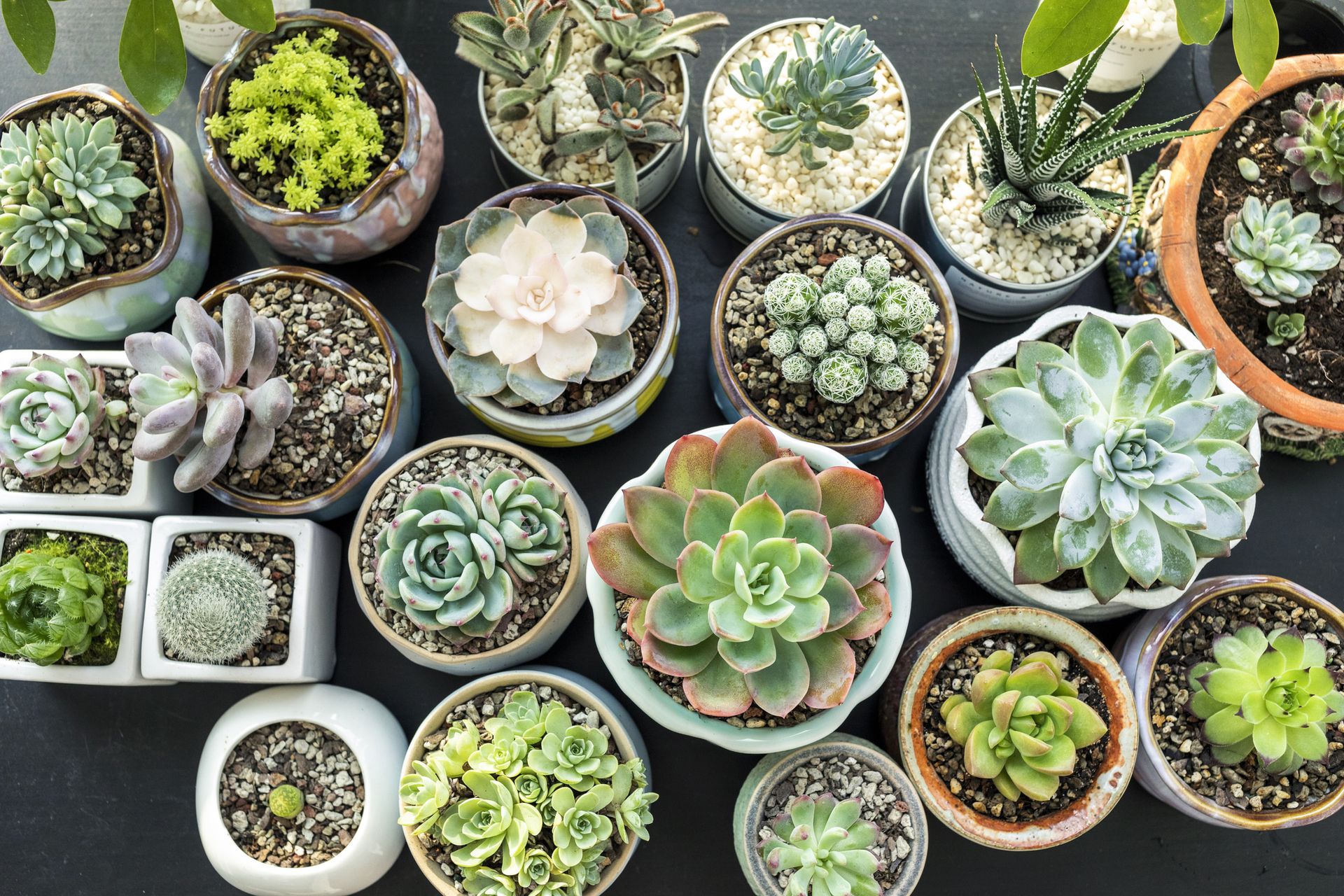
With their intriguing and intricate shapes, succulents are hugely popular plants – both indoors and out. Gynelle Lyon author of Prick (opens in new tab), (published Mitchell Beazley) says, ‘the term "succulent" refers to those plants, that over time have undergone modifications to their shape and structure. These have resulted in a huge number of weird and wonderful plants that are not only tough but also simple to grow.’
Varying in shape, size, color and height, these little gems make a fantastic indoor display grouped together in individual pots lined up on shelf or window ledge or planted en masse as a table focal point. Echeveria, sedum, lithops and haworthia are all easily found, decorative and love a bright, sunny spot. Avoid humid areas such as bathrooms or kitchens, instead opt for dry conditions with warm temperatures from 64-75℉ (18 – 24°C). Allow the compost to dry out completely before watering thoroughly, avoiding the rosettes or glaucous leaves as this will cause the plant to rot.
8. Pothos or Devils ivy
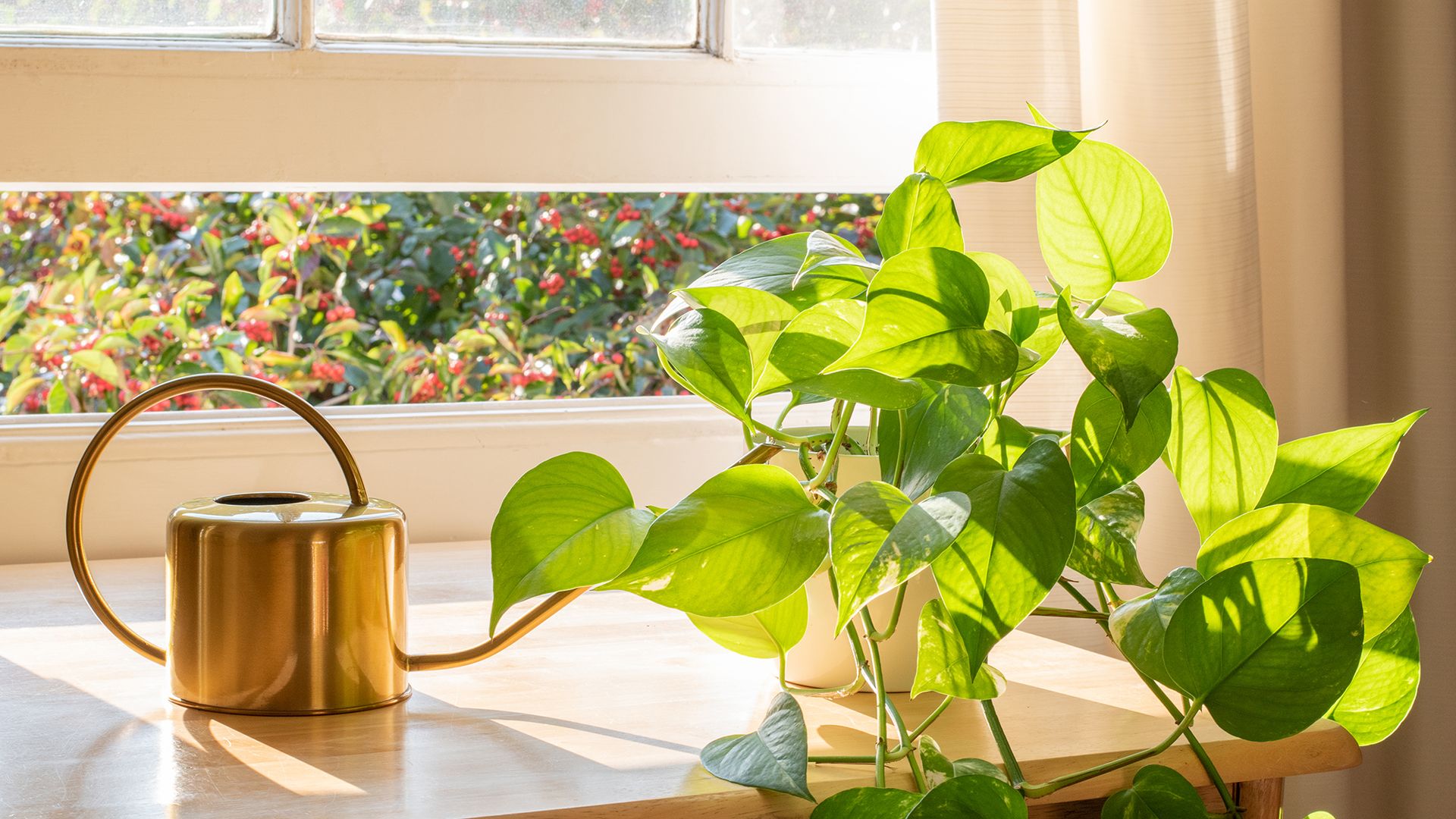
Easy to care for and highly rewarding, Pothos are large leaved climbers (or trailers depending on your preference) are prolific and almost thrive on neglect. With a huge range of different colored foliage to choose from; neon green and silver blue green are just two striking options, you can add real impact to practically any room in the house. The fleshy stems can reach up to 65ft plus (20m+) in the wild but are likely to reach less indoors. Trim if needed.
Preferred room temperatures range from 50-73℉ (10 – 24°C) and although they do like humid conditions only water when the top two inches of compost are dry. The leaves tend to curl slightly when thirsty. If you ever find yourself wondering 'why is my pothos turning yellow?' it could be that you are watering it too much or too little.
9. Peacock plant or calathea

Proud owners of the most decorative foliage; peacock plants have fantastically striped leaves in shades of green, yellow, pink and white. ‘Sometimes referred to as the prayer plant because its leaves lie flat during the day and fold upwards at night, as if in prayer,’ explains Mark Lawlor of Happy Houseplants.
Big fans of warm humid conditions, these plants prefer toasty temperatures of around 64-75℉ (18 – 24°C) and benefit from a regular misting. ‘Overwatering is a common mistake with Maranta; rather than follow a routine, think about how much sunshine your plant receives through the day. Overwatered Maranta will show signs of distress, such as yellowing leaves. When in doubt, follow the simple rule 'drench then drought', ensuring the soil always dries out between waterings,’ continues Mark.
Place them in direct but not strong light – a north or east facing window is ideal – for the best leaf coloring.
10. Bromeliads
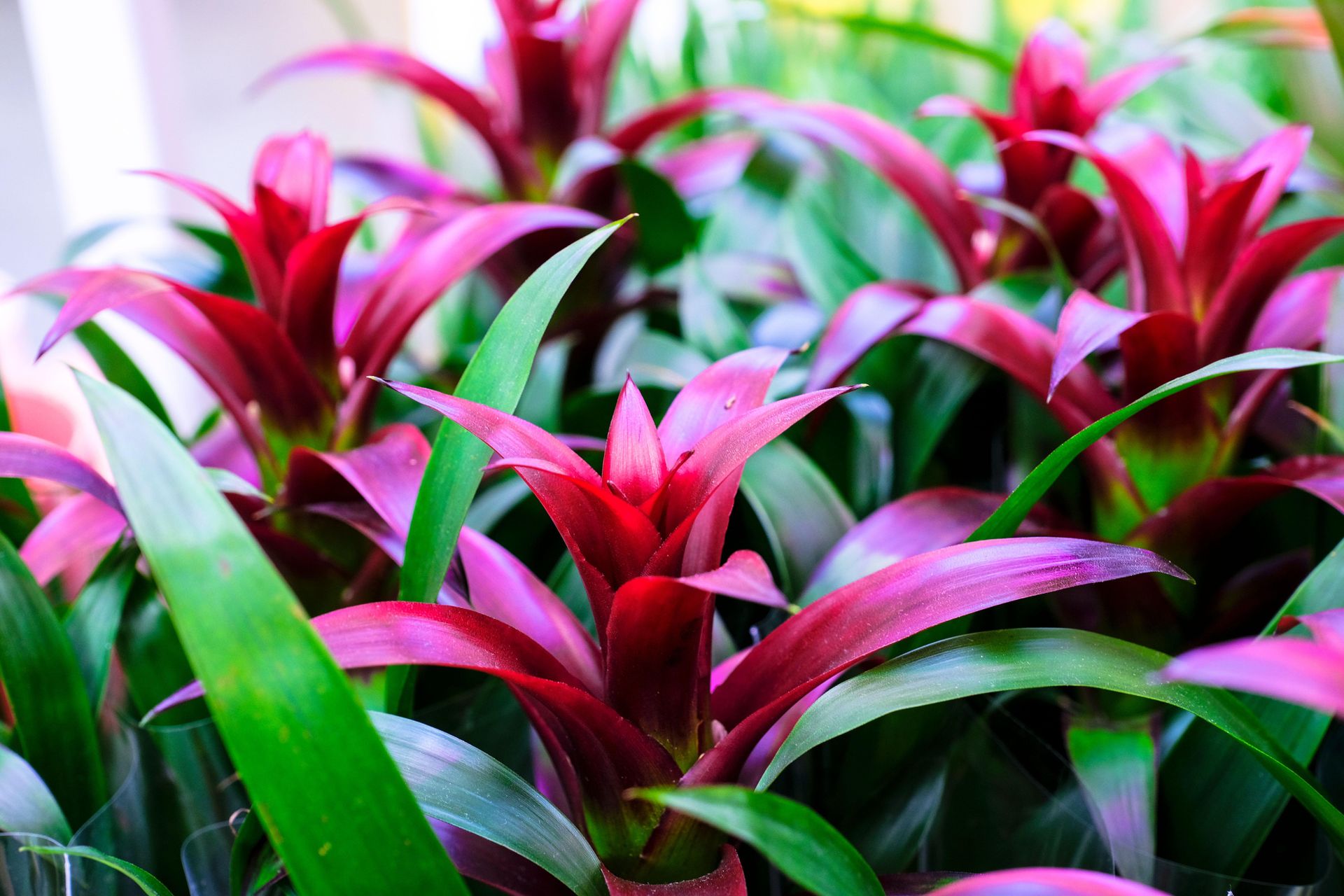
Exotic and highly colored – these tropical plants love bright sunny spots and are easy-to-grow, long lasting house plants. From the centre of the thick tube-like rosettes of foliage, the plant produces a brilliantly colored flower spike – this can be fuchsia, orange, yellow or red depending on variety – and they make a spectacular indoor feature.
In the wild, water naturally collects in the lowest ‘cup’ of leaves so imitate this when watering the plant indoors. Empty the water out weekly to remove any collected insects and debris.
Fans of a constant temperature of 59℉ (15°C), these unusual plants also appreciate their leaves being misted once a week during summer. Increase humidity further by standing the plant on a gravel filled saucer partially filled with water. Do avoid leaving the roots in standing water though, as this can cause the plant to suffocate.
What is the best indoor plant?
Definitely a matter of personal opinion, but one of the most impressive and hard to kill indoor plants is the Kentia palm (below and top). Able to cope with most light conditions this elegant palm grows up to 10ft (3m) tall, has slender leaves, casting beautiful shadows and simply oozes class and sophistication. Pop it in a pot away from direct light and it will be happy with minimal fuss.
‘The golden rule is not to leave this plant sitting in water,’ say the team at Crocus (opens in new tab). ‘They like a moist soil but don't like to have their roots sodden, so feel the top of the soil before watering. In the winter it will still need watering but not as much.‘
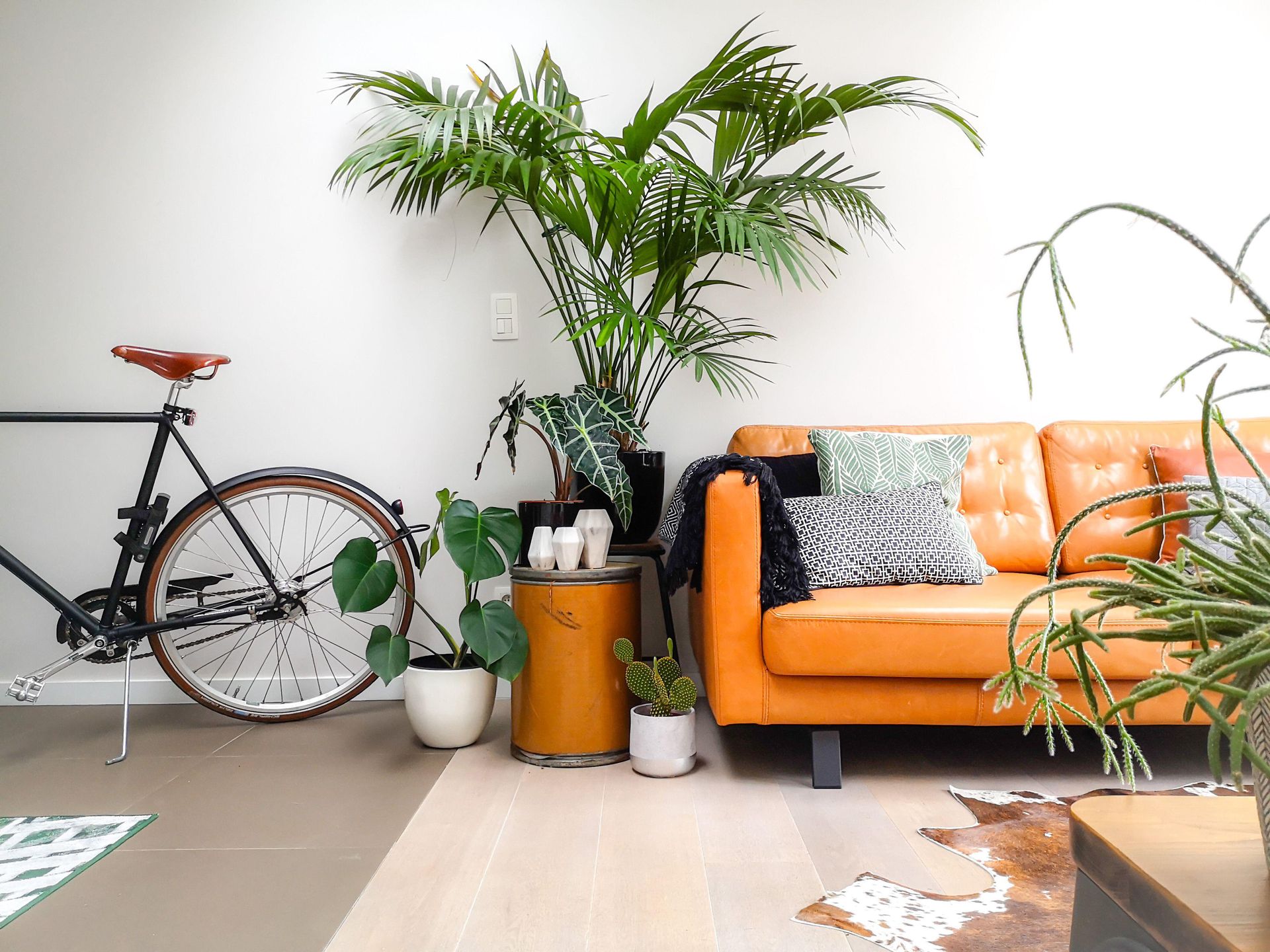
What is the best house plant for a living room?
Fibrous and rhizomatous begonias make excellent houseplants thanks to their highly decorative foliage. Finding them a bright spot but out of direct sunlight is key to their success along with some humidity. ‘Begonia’ Gryphon’ is grown for its wonderful architectural foliage,’ says plant specialist Sarah Raven (opens in new tab). ‘The maple-shaped leaves are deep green, marked with silver on their surface and dark red below making it a striking statement.’
Overwatering is a common problem with begonias so do wait until the leaves begin to droop before watering. Avoid getting any water on the leaves as this can lead to fungal diseases such as powdery mildew. Although it can be easy to get rid of powdery mildew, it can weaken your plant quickly. You will need to know how to overwinter begonias if you want to grow them outdoors.
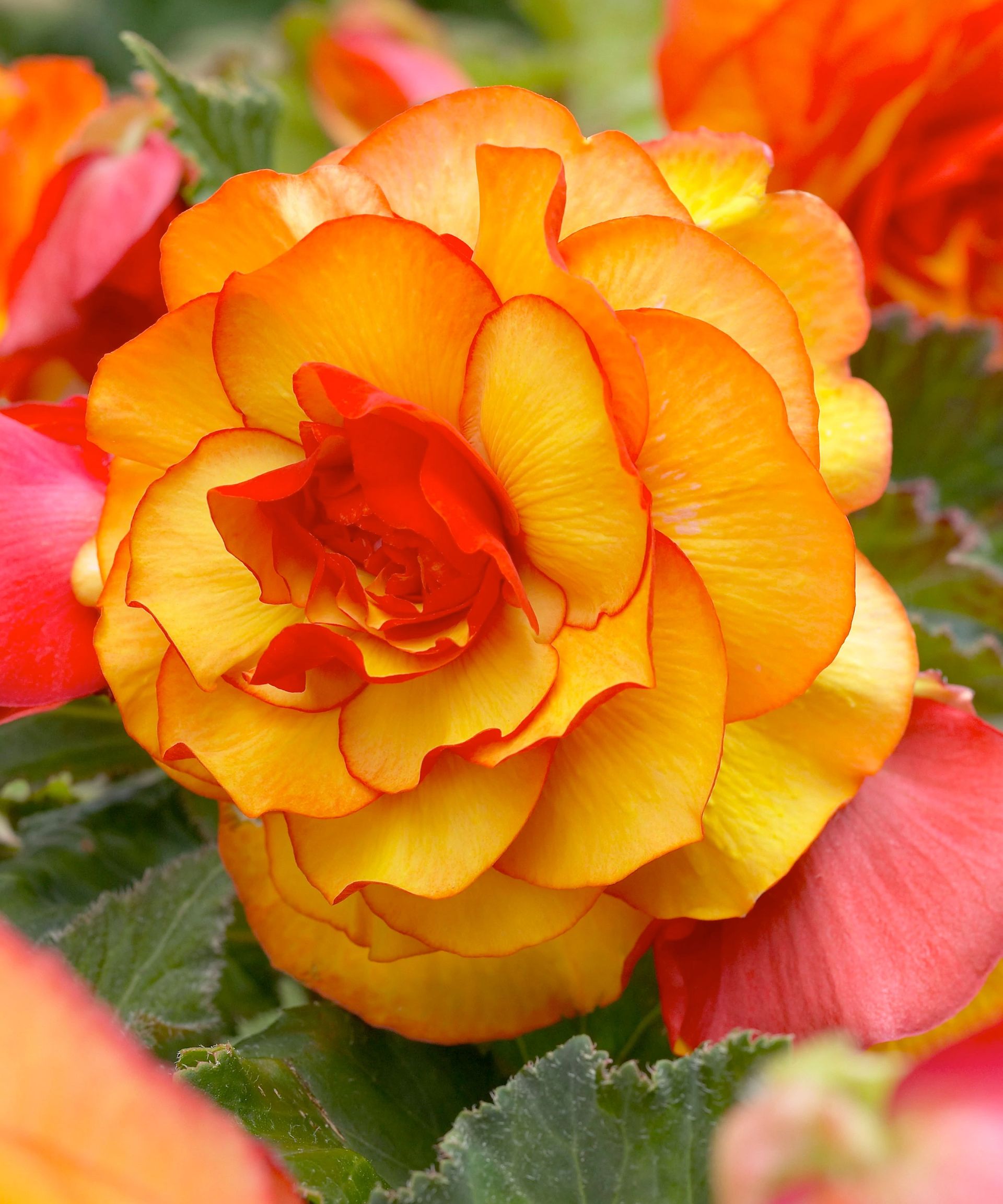
Watering indoor plants
More house plants are killed off by overwatering than anything else. In our keenness to nurture and fill our homes with lush foliage we tend to reach for the watering can, but this is often not the answer. Plant writer Veronica Peerless says, ‘Indoor plants need less water than we realize. Use the soil as an indicator. It’s okay for the top inch to be dry but if its more then it’s time to soak the plant. Soak the plant, in its plastic pot for 30 minutes, allow it to drain before popping it back in place.’
Where to buy the best indoor plants?
You can buy the best indoor plants at your local nursery; ask for guidance if you need help. Otherwise, shop online for the best places to buy plants. These include: Lowes Garden Center (opens in new tab), Home Depot's Garden Center (opens in new tab) and Burpee (opens in new tab) for the best buys.

Jill Morgan has spent the last 20 years writing for Interior and Gardening magazines both in print and online. Titles she has been lucky enough to work on include House Beautiful, The English
Home, Ideal Home, Modern Gardens and Gardeningetc.com. Although much of her career has involved commissioning and writing about reader homes and home improvement projects, her
everlasting passion is for gardens and outdoor living, which is what she writes about for Homes & Gardens.
-
-
 Vitamix E310 Explorian Blender review: is Vitamix's basic blender worth it?
Vitamix E310 Explorian Blender review: is Vitamix's basic blender worth it?We put the Vitamix E310 Explorian to the test to see if this entry-level blender is as good as the rest of the brand
By Helen McCue • Published
-
 Super Bowl party checklist – everything you need to get ready for the big game
Super Bowl party checklist – everything you need to get ready for the big gameGet ready for game day with the ultimate Super Bowl Party checklist
By Zara Stacey • Published

